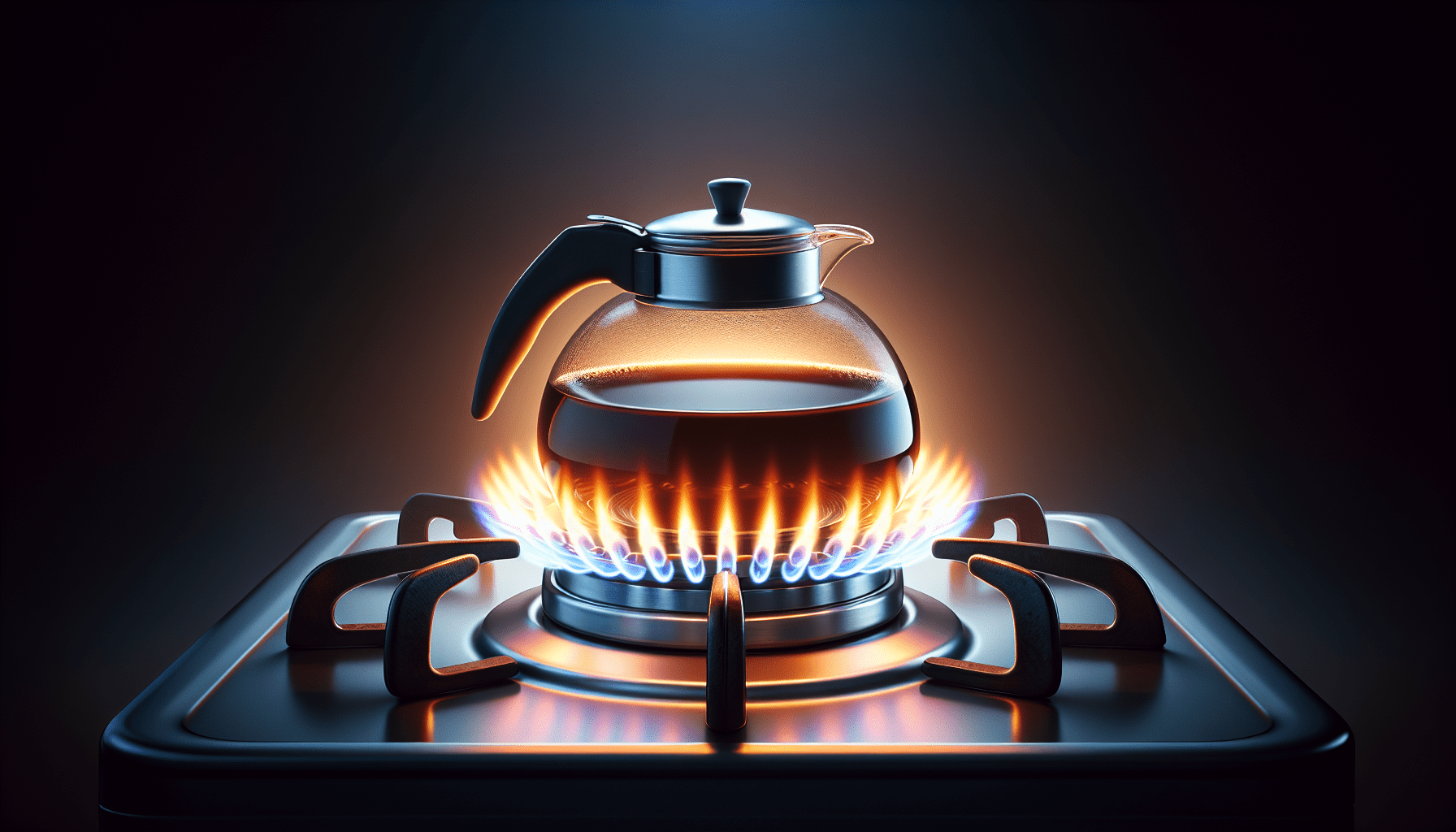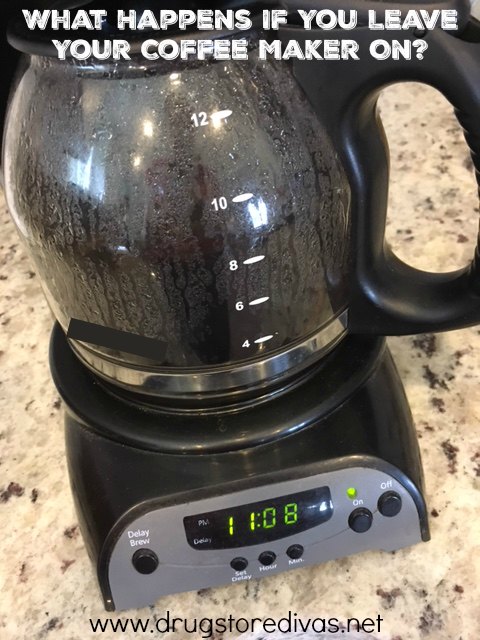So, you’ve recently acquired a shiny new glass coffee pot and you’re wondering whether it can safely grace your trusty gas stove. Well, worry not, as I’m here to put your curious mind at ease. In this article, we’ll explore whether using a glass coffee pot on a gas stove is a match made in heaven or a recipe for disaster. Spoiler alert: there might just be a delightful cup of joe waiting for you at the end of this delightful journey.
Understanding Glass Coffee Pots
Glass coffee pots are a popular choice among coffee enthusiasts for their unique properties. They are made from a type of glass that is resistant to heat and can withstand the brewing process. This makes them a durable option for brewing your favorite coffee on a gas stove.
Properties of glass coffee pots
Glass coffee pots are typically made from either borosilicate glass, tempered glass, or regular glass. Borosilicate glass is known for its high resistance to thermal shock, making it a reliable choice for coffee brewing. Tempered glass is strengthened through a heating and rapid cooling process, making it more resistant to breakage. Regular glass is less resistant to the impact of temperature changes but is still commonly used in coffee pots.
Benefits of using glass coffee pots
There are several benefits to using a glass coffee pot on a gas stove. One of the main advantages is that glass is chemically inert, which means it does not absorb or impart any flavors onto your coffee. This allows you to fully enjoy the pure and authentic taste of your brewed coffee. Additionally, glass coffee pots are visually appealing and offer great visibility, allowing you to monitor the brewing process and ensure the perfect extraction.
Safety precautions with glass coffee pots
While glass coffee pots are generally safe to use on gas stoves, it is important to exercise caution and follow some safety precautions. Avoid using a glass coffee pot that is cracked or damaged, as it may break under the heat. Always handle the pot with care, using oven mitts or a towel to protect your hands. It is also important to avoid sudden temperature changes, such as placing a hot coffee pot directly onto a cold surface, as this can cause the glass to shatter. By taking these safety measures, you can enjoy your glass coffee pot without any worries.
Compatibility of Glass Coffee Pots on Gas Stoves
Many people wonder whether glass coffee pots are compatible with gas stoves due to concerns about heat resistance. Let’s explore this topic further to understand the compatibility and risks associated with using glass coffee pots on gas stoves.
Glass and heat resistance
Glass is known for its heat resistance, and most glass coffee pots are designed to withstand the high temperatures encountered during the coffee brewing process. However, it’s important to note that not all glass is created equal, and some types may be more resistant to heat than others.
Direct flame vs. gas burner
When using a glass coffee pot on a gas stove, it is essential to keep in mind the difference between a direct flame and a gas burner. A direct flame can be more intense and may pose a higher risk of shattering the glass. On the other hand, a gas burner typically distributes heat more evenly, reducing the risk of thermal shock. It is recommended to use a gas burner rather than placing the glass coffee pot directly over a flame.
Potential risks of using glass coffee pots on gas stoves
While glass coffee pots are generally compatible with gas stoves, there are some potential risks to consider. The main risk is the possibility of the glass breaking due to thermal shock. This can happen if the coffee pot is exposed to a sudden drastic change in temperature. To minimize this risk, it is important to handle the glass coffee pot with care and avoid subjecting it to extreme temperature changes. By following the appropriate precautions, you can safely enjoy your glass coffee pot on a gas stove.
Determining the Type of Glass Coffee Pot
When choosing a glass coffee pot, it’s important to understand the different types of glass used in their construction. The type of glass can impact the durability, heat resistance, and overall quality of the coffee pot. Let’s explore the three main types of glass used in glass coffee pots.
Borosilicate glass
Borosilicate glass is a high-quality glass commonly used in glass coffee pots. It is known for its excellent thermal shock resistance, making it highly resistant to breakage due to sudden temperature changes. Borosilicate glass coffee pots are an ideal choice for those who want a durable and reliable brewing vessel that can withstand the rigors of the coffee brewing process.
Tempered glass
Tempered glass is another popular option for glass coffee pots. It undergoes a special heat treatment process that makes it more resistant to breakage compared to regular glass. While tempered glass may not have the same level of thermal shock resistance as borosilicate glass, it still offers increased strength and durability. Tempered glass coffee pots are a good choice for those who desire a balance between affordability and reliability.
Regular glass
Regular glass, also known as soda-lime glass, is the most common type of glass used in coffee pots. It is less expensive than borosilicate or tempered glass, but it may not have the same level of heat resistance. Regular glass coffee pots can still be suitable for brewing coffee, but it is important to handle them with care to avoid potential breakage caused by thermal shock.
By understanding the differences between these types of glass, you can make an informed decision when choosing a glass coffee pot that meets your needs and preferences.
Glass Coffee Pot Maintenance
To keep your glass coffee pot in optimal condition and ensure its longevity, proper cleaning, care, and handling are essential. Let’s explore some maintenance tips for glass coffee pots.
Cleaning and care
Regular cleaning is necessary to remove coffee residue and maintain the pristine appearance of your glass coffee pot. Start by rinsing the pot with warm water to remove any loose grounds. Then, use a mild dish soap and a non-abrasive sponge or brush to gently scrub the interior and exterior of the pot. Avoid using harsh chemicals or abrasive materials that can scratch the glass. Rinse thoroughly and dry the pot completely before storing or using it again.
Avoiding sudden temperature changes
Glass coffee pots are vulnerable to thermal shock, which can cause them to break. To avoid this, it’s important to prevent sudden temperature changes. For example, never pour cold water into a hot glass coffee pot or place a hot pot on a cold surface. Allow the pot to cool down gradually before subjecting it to extreme temperature changes. By taking these precautions, you can reduce the risk of thermal stress and prolong the lifespan of your glass coffee pot.
Storing and handling
Proper storage and handling of your glass coffee pot can also contribute to its longevity. When storing the pot, make sure it is in a safe and secure location where it won’t be at risk of falling or being knocked over. Avoid stacking heavy objects on top of the coffee pot, as this can cause unnecessary pressure and increase the risk of breakage. When handling the pot, use oven mitts or a towel to protect your hands from the heat. By following these guidelines, you can ensure that your glass coffee pot remains in excellent condition for years to come.
Alternatives to Glass Coffee Pots on Gas Stoves
While glass coffee pots offer many benefits, some individuals may prefer alternative brewing options. Let’s explore three popular alternatives to glass coffee pots on gas stoves.
Stovetop espresso makers
Stovetop espresso makers, also known as moka pots, are a classic alternative to glass coffee pots. These brewing devices are typically made from aluminum or stainless steel and offer a different brewing experience. Stovetop espresso makers use pressure to extract coffee, resulting in a rich and flavorful espresso-like coffee. They are compatible with gas stoves and provide a convenient and efficient way to brew your favorite coffee at home.
Stainless steel coffee pots
For those seeking durability and heat retention, stainless steel coffee pots are an excellent choice. These pots are known for their excellent heat conductivity and can keep your coffee hot for longer periods. Stainless steel coffee pots are also resistant to breakage, making them a safer alternative to glass for individuals concerned about potential accidents or mishandling.
French press
The French press, also known as a cafetière, is a popular brewing method that doesn’t require a coffee pot. Instead, it consists of a cylindrical glass or stainless steel container with a plunger and a mesh filter. The French press allows for full immersion brewing, resulting in a robust and flavorful coffee. It is a versatile option that can be used on gas stoves and provides a unique brewing experience for coffee enthusiasts.
By considering these alternatives, you can find the brewing method that best suits your preferences, needs, and safety concerns.
Benefits of Glass Coffee Pots on Gas Stoves
Using a glass coffee pot on a gas stove offers several advantages that can enhance your coffee brewing experience. Let’s explore the benefits of using a glass coffee pot on a gas stove.
Heat distribution
Glass coffee pots have excellent heat conductivity, which allows for even heat distribution during the brewing process. This ensures that the coffee grounds are extracted uniformly, resulting in a well-balanced and flavorful cup of coffee. The transparency of the glass also allows you to visually monitor the brewing process and make adjustments as needed.
Aesthetics and visibility
Glass coffee pots are visually appealing and can easily complement any kitchen decor. Their transparency allows you to see the brewing process in action, providing an enjoyable and aesthetically pleasing experience. You can observe the blooming of the coffee grounds, the movement of the water, and the color of the coffee as it brews, adding an element of excitement to your daily coffee ritual.
Brewing control
When using a glass coffee pot on a gas stove, you have more control over the brewing parameters, such as water temperature and brewing time. Glass coffee pots allow you to thoroughly monitor and fine-tune these variables, enabling you to achieve your preferred strength and flavor profile. This level of control can enhance your ability to experiment with different brewing techniques and ultimately tailor your coffee brewing to your specific taste preferences.
By utilizing a glass coffee pot on a gas stove, you can reap these benefits and elevate your coffee brewing experience to new heights.
Precautions and Safety Measures
To ensure a safe and enjoyable coffee brewing experience when using a glass coffee pot on a gas stove, it’s important to take some precautions and follow safety measures. Let’s explore a few key precautions to consider.
Using a heat diffuser
Using a heat diffuser, such as a metal plate or a perforated disk, can help distribute the heat more evenly and reduce the risk of thermal shock. Placing the heat diffuser between the gas burner and the glass coffee pot can help protect the pot from direct heat and minimize the chances of sudden temperature changes.
Appropriate burner size
When using a glass coffee pot on a gas stove, it is important to ensure that the burner size matches the base diameter of the coffee pot. Using a burner that is too large can cause the flame to extend beyond the pot’s base, potentially leading to uneven heating and increased risk of breakage. Selecting the appropriate burner size ensures even heat distribution and reduces the likelihood of accidents.
Avoiding extreme temperature changes
As mentioned earlier, glass coffee pots are susceptible to thermal shock caused by sudden temperature changes. To mitigate this risk, avoid exposing the pot to extreme temperature changes, such as placing it directly on a cold surface or transferring it from a hot stove to a cold water-filled sink. Taking these precautions will help prolong the lifespan of your glass coffee pot and prevent accidents.
By following these safety measures and taking the necessary precautions, you can enjoy the benefits of using a glass coffee pot on a gas stove without compromising your safety or the quality of your coffee.
Experiences and Tips from Users
Learning from the experiences and tips of other users can provide valuable insight into using glass coffee pots on gas stoves. Let’s explore some common experiences and tips shared by users.
User reviews and experiences
Many users reported positive experiences when using glass coffee pots on gas stoves. They praised the heat resistance, durability, and aesthetics of glass coffee pots, highlighting the ability to monitor the brewing process as a significant advantage. Users also shared their appreciation for the pure coffee taste achieved with glass coffee pots, emphasizing the absence of any flavor contamination.
Tips for using glass coffee pots on gas stoves
Users offered several tips for maximizing the use of glass coffee pots on gas stoves. One common suggestion is to preheat the coffee pot with warm water before brewing. This helps minimize the risk of sudden temperature changes and improves heat retention during the brewing process. Others recommended using a finer grind size to increase extraction efficiency and enhance flavor. Additionally, some users advised adjusting the gas flame to achieve optimal heat distribution and avoid overheating the glass.
By considering the experiences and tips shared by other users, you can gain additional guidance and insights to enhance your own coffee brewing practices.
Consulting the Manufacturer’s Guidelines
When using a glass coffee pot on a gas stove, it is crucial to consult the manufacturer’s guidelines. The manufacturer’s recommendations provide specific instructions and warnings tailored to the glass coffee pot you are using. Let’s explore why it is important to follow these guidelines.
Manufacturer’s recommendations
The manufacturer’s recommendations are designed to ensure the safe and proper use of the glass coffee pot. They provide valuable information on the maximum temperature limits, appropriate cleaning methods, and any specific precautions or limitations associated with your coffee pot. Deviating from these guidelines may void the manufacturer’s warranty and compromise the safety and functionality of the glass coffee pot.
Specific instructions and warnings
Manufacturer’s guidelines often contain specific instructions for using the glass coffee pot on a gas stove. This may include recommendations for heat diffusers, burner size compatibility, and safe handling practices. Additionally, the guidelines may highlight potential risks and warnings to be aware of to prevent accidents and breakage. By following these instructions and heeding the warnings, you can ensure a safe and enjoyable coffee brewing experience.
By reading and adhering to the manufacturer’s guidelines, you can use your glass coffee pot on a gas stove with confidence, knowing that you are following the recommendations of the experts who designed and produced the product.
Conclusion
In conclusion, glass coffee pots can be safely used on gas stoves with proper precautions and maintenance. By understanding the properties of glass coffee pots, the compatibility with gas stoves, and the different types of glass used in their construction, you can make an informed decision when choosing a coffee pot. Glass coffee pots offer several benefits, including heat distribution, aesthetics, and brewing control. However, it is crucial to take precautions and follow safety measures to prevent accidents and ensure the longevity of your coffee pot.
By utilizing alternatives like stovetop espresso makers, stainless steel coffee pots, or French presses, you can explore different brewing methods that suit your preferences and safety concerns. Consulting the manufacturer’s guidelines and heeding their recommendations and warnings will further enhance your coffee brewing experience.
Ultimately, using a glass coffee pot on a gas stove can provide a visually engaging and flavorful coffee brewing experience. With proper understanding, precautions, and maintenance, you can enjoy the convenience and beauty of glass coffee pots while ensuring the safety and quality of your brew.




